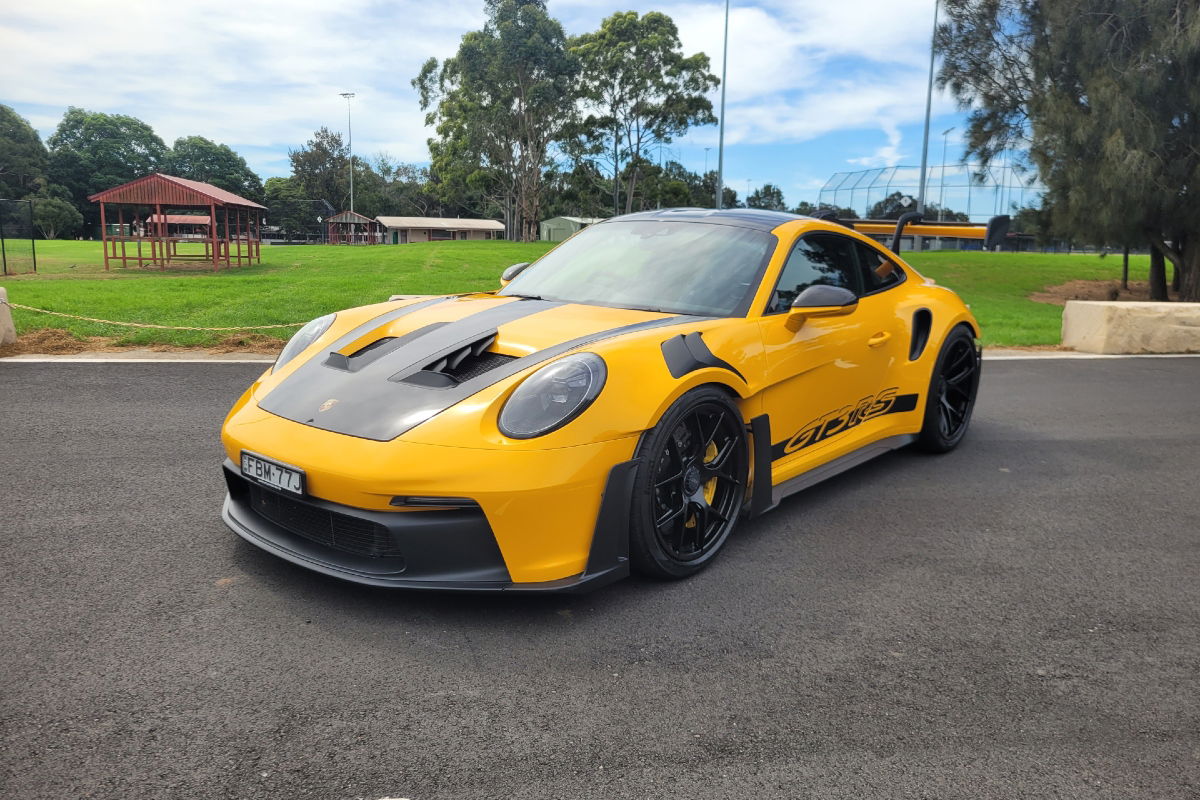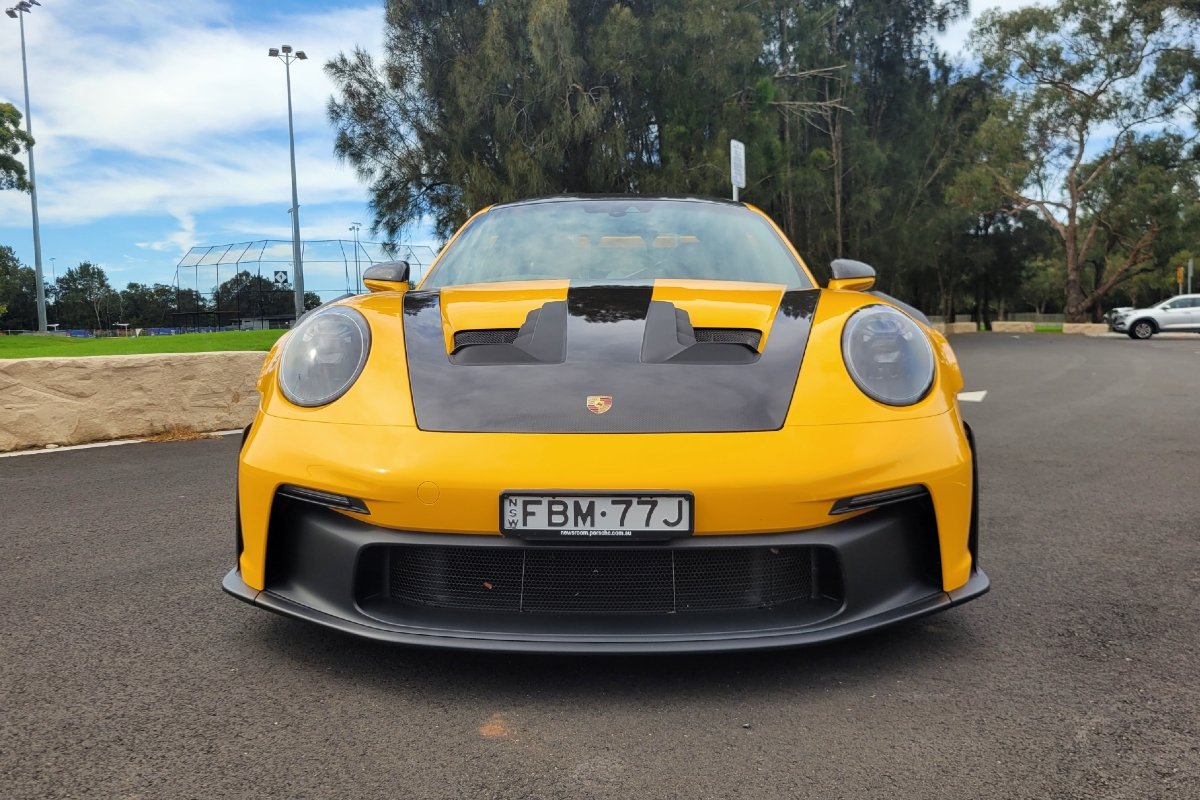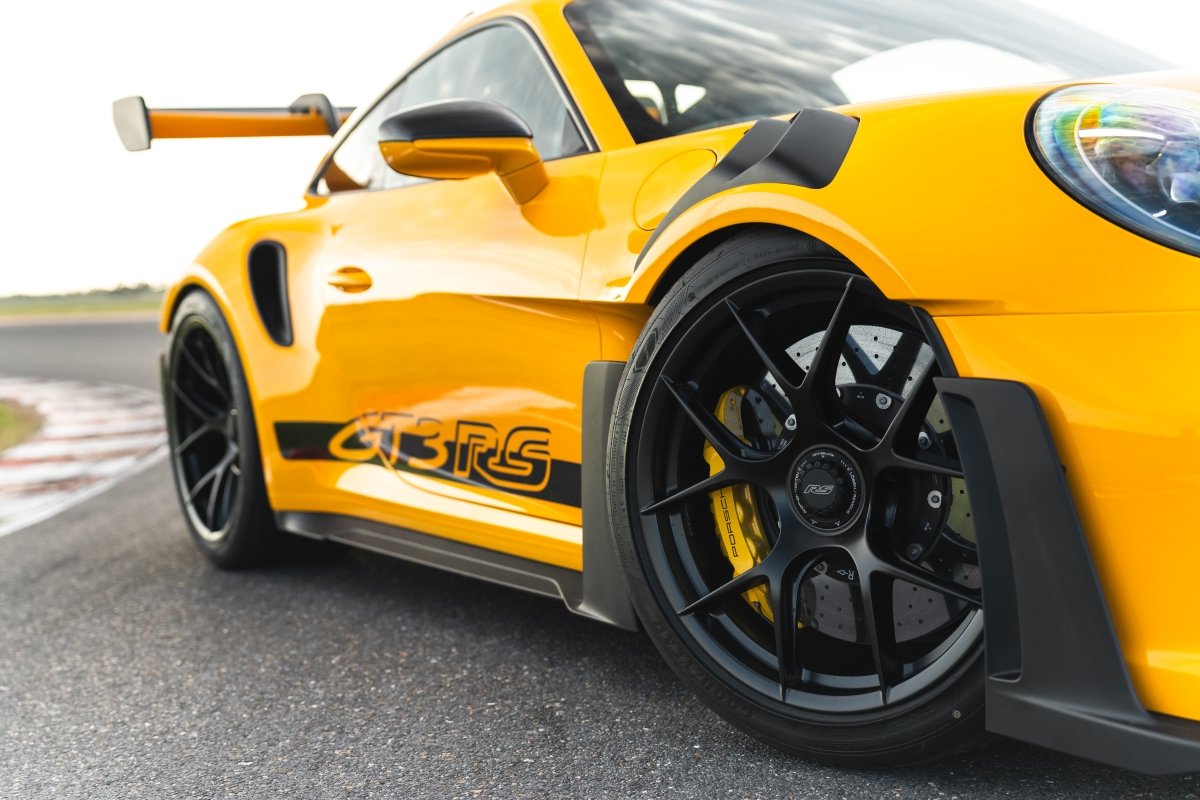
What is it?
Perhaps the most extreme road car you can buy today. This is the latest iteration of Porsche’s most driver-focused 911, the GT3 RS. We’ve already driven it on the racetrack, lapping The Bend to see it at its maximum potential and we were blown away by it.
But how does such a track-capable, and clearly very track-centric car, handle itself on the road? Because despite all the aerodynamic fine-tuning Porsche has done to ensure it feels as close to a Carrera Cup car as it can, the GT3 RS is still a road-legal car and therefore still needs to be capable in a variety of conditions.
So we spent a few days behind the wheel, deliberately skipping the track to experience what living with a car with every performance element turned up to 11 is really like.
TRACK TEST: We drive the new Porsche 911 GT3 RS at The Bend
Does it have any racing pedigree?

You could write a book on Porsche’s racing heritage. But specifically the GT3 RS has plenty of direct connections to the company’s on-track efforts. Large elements of the design have been taken from racing learnings, in particular the Carrera Cup car, 911 GT3 R (GT3 class) and 911 RSR (GTE class).
READ MORE: Electric shock – New Porsche 911 introduces hybrid technology
It goes well beyond the obvious aerodynamic package too, even if that’s the most visible area thanks to all the wings and aero flicks. But one of the biggest differences between the GT3 RS and the GT3 model that sits below it in the range is the centrally-mounted radiator. This comes directly from the 911 RSR, moving the radiator to where the front luggage compartment would usually be in order to open up more space for the front splitter to create more downforce.
But, like I say, this is only a small part of the story of Porsche’s extensive racing pedigree.
READ MORE: How Carrera Cup helped shape the latest Porsche 911 GT3
What’s under the bonnet?

It’s powered by the same 4.0-litre flat-six from the GT3 but has unique camshafts and modified cam profiles to increase power by 11kW to 386kW, while torque actually drops 5Nm to 465Nm.
The engine is paired exclusively to a seven-speed dual-clutch transmission, no manual option is available, and it sends all the power to the rear wheels.
READ MORE: We go off-road in the Porsche 911 Dakar
It is, to be blunt, one of the best engines on the market today. It will rev all the way to 9000rpm and makes the most magical mechanical symphony as it does so. While it may not be the most powerful engine, that doesn’t matter, because it has more than enough power to make you feel like you’ve launched off the startline of a Carrera Cup race.
Besides, that’s only an issue on the track, on the road it has more than enough power to blast past 110km/h and that’s all you (officially) need. Importantly though, it’s an incredibly flexible engine, so it feels punchy and responsive at road legal speeds just as much as it does flat-out on the track.
How does it handle?

Driving the 911 GT3 RS on the road feels a bit like if you went down to the local park to play basketball with Michael Jordan. You cannot even approach its dynamic and handling limits on the road, it’s simply too good for that.
That’s because, in addition to the race-grade aero, the suspension features changes to the geometry and spring rates above and beyond the ‘regular’ GT3, and includes the ability to adjust rebound and compression damping individually between front and rear. We didn’t even get a chance to fully explore this feature at The Bend, so you’re not going to worry about it on the road.
It sticks to the road thanks to its huge rubber, with the front tyres measuring 275/35 and wrapping around 20-inch forged alloy rims, while at the rear they are 335/30 profile on 21-inch wheels.
Having said all of the above about it being too much for the road, you can still have fun with the GT3 RS while staying within reasonable and safe limits. The ride is firm but not uncomfortably so, but the immense grip and incredibly responsive chassis means you can attack corners with precision, speed and ease.
As long as you can restrain yourself from going dangerously fast, you can find a sweet spot to enjoy Porsche’s finest without attracting the local law enforcement.
As for the rest of the driving experience, the daily commuting sort of thing, well that’s an area where the 911 GT3 RS doesn’t feel so impressive. It’s noisy, firm and you attract plenty of attention, mostly from people that think you look stupid in your ‘boy racer’ car. I don’t blame them, because it’s really not designed to hit the local drive-thru or do the school run, it stands out like a sore thumb and there are much more comfortable and capable members of the Porsche range to do that sort of thing in.
Where would you most like to drive it?
Obviously the racetrack is where this car feels most at home, big, fast and challenging circuits like The Bend, Phillip Island or Mt Panorama. But if I was restricted to driving it on the road, I’d go searching for those remote sections of smooth tarmac that will allow you to get away from civilisation and experience the scream of the flat-six and the grip of the tyres in peace.
What’s the interior like?
Functional and purposeful but not spartan or uncomfortable’ is how we described it when we track-tested it and it’s still a fair assessment.
Our test car was fitted with the optional, track-friendly Weissach Package, which adds carbon fibre racing-style seats and multi-point harnesses as well as a half-roll cage. That’s not typical of what you’d find in a road car, so it does make it feel more race-ready while also cutting down on some more practicality (you can’t fit anything very large behind the front seats because the roll cage is in the way).
But the seats themselves are fairly comfortable and keep you snug and in place, while it does come with convenience items you’d hope for, like air-conditioning and a nice sound system.
How much does the Porsche 911 GT3 RS cost?
Amid the now very lengthy (24) 911 variants the GT3 RS sits near the very top, priced from $537,600 (plus on-road costs). That puts it above the GT3 (from $417,400) but below both the Turbo S (from $538,700) and new S/T (from $660,500).
Would I buy one?

If the question is ‘Would I buy one to drive to work?’ The answer is no. But would I buy one as a weekend toy, something to take to track days on a regular basis? Then the answer is an overwhelming yes. Yes, please. With sugar on top.
This is one of the best cars I’ve driven… ever. But it’s far from my favourite car to drive on the road. It’s much too quick, too capable, to really enjoy at road legal speeds. Frankly, it looks borderline ridiculous on the road. It looks like it should be on a dummy grid, not at the shopping centre car park.
But that’s actually what Porsche had in mind. It was designed to be more extreme on purpose. The regular 911 GT3 can play the role of road car, leaving the GT3 RS as the bridge between those who take their track days seriously and those who want to go racing in Carrera Cup, GT4 or GT3 competition.























Discussion about this post